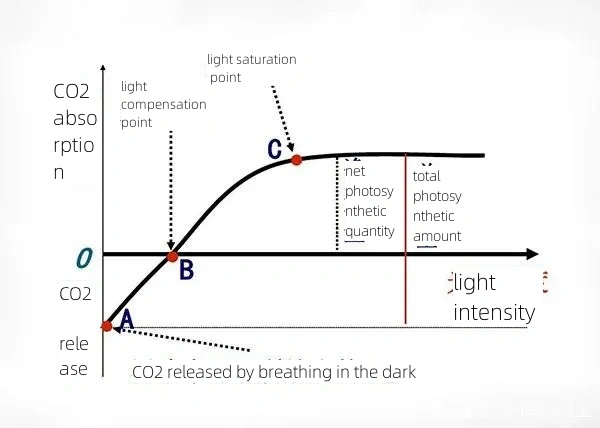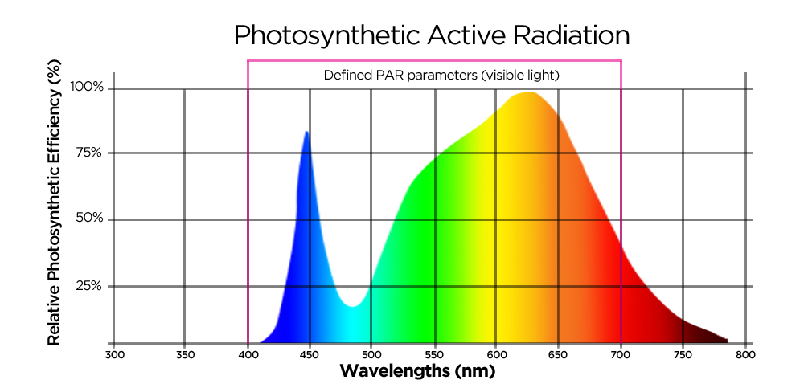
Research on red and blue light in diffuse reflective glass
What we have been emphasizing when selecting the diffuse reflective glass on the top of the greenhouse is high light transmittance. High light transmittance can not only bring more sufficient light to the growth of fruits and vegetables in the greenhouse, but also the scattering characteristics of the diffuse reflective glass can ensure that the roots of fruit and vegetable plants Can also get enough light.
If you think that the higher the light, the better, you are wrong. The ability of fruits and vegetables to perform photosynthesis is limited. Plant growth depends on photosynthesis and has a light compensation point and a light saturation point.
What are the light compensation point and light saturation point, for example;
It's like I'm hungry and need to use up my body's fat reserves. Insufficient light for fruits and vegetables means they respire at night, releasing carbon dioxide and consuming nutrients. Fruits and vegetables will not grow.
After I took two bites of rice, I no longer felt hungry. This is the light compensation point, and fruits and vegetables are in a state of neither consumption nor growth. Generally, this state will not last long.
I felt full after eating for a while. This is the light saturation point. Plants use their maximum power for photosynthesis. No matter how high the light intensity is, they cannot produce more nutrients.
If you are full, eat again and you will be exhausted. When fruits and vegetables reach the light saturation point, they will no longer carry out photosynthesis. If the light is too strong at this time, the leaves of fruits and vegetables will be scorched.

Greenhouse fruits and vegetables have needs for light, and not all light is needed for plant growth. So what about the light that plants need to grow? Look at a picture.

The picture above shows the spectrum required for the growth of fruits and vegetables. The two wavelengths of blue-violet light 400-500nm and infrared light 630-700nm are most helpful for the growth of fruits and vegetables.
The light-selective performance of greenhouse diffuse reflective glass just meets the light needs of plant growth. Is there another possibility? What if the intensity of blue-violet light and infrared light exceeds the light saturation point for plant growth?
This is also the reason why the greenhouse diffuse reflection glass is designed as rolled glass. The rolled pear pattern has certain scattering properties and can disperse light, which not only increases the coverage area of light, but also reduces the intensity of light. Coupled with the haze properties of diffuse reflective glass, it can further reduce the inhibitory effect of excessive light on plant growth.
The selection of greenhouse glass not only depends on the characteristics of the glass itself, but also needs to be combined with local environmental conditions and plant growth characteristics to selectively customize the specifications of the glass.
Tags:anti-reflective glass diffuse glass agricultural greenhouses glass greenhouse venlo greenhouse AR glass greenhouses glass agricultural glass horticultural glass #greenhouseglass #Antireflectiveglass #Diffusetemperedglass #Ultrawhitefloatglass #agriculturalgreenhouseglass #diffuseglass #horticulturalglass #Tomatogreenhouse #Coloredpeppergreenhouse #Lettucegreenhouse #Agriculturalgreenhouse #ARglass #venlogreenhouse #greenhouseglass #Antireflectiveglass #Diffusetemperedglass #Ultrawhitefloatglass #agriculturalgreenhouseglass #diffuseglass #horticulturalglass #Tomatogreenhouse #Coloredpeppergreenhouse #Lettucegreenhouse #Agriculturalgreenhouse #ARglass #venlogreenhouse #GlassManufacturer #invernadero #ArchitecturalGlass #ClearFloatGlass #FloatGlass
Previous:What kind of glass is used in today’s technology greenhouses?



















